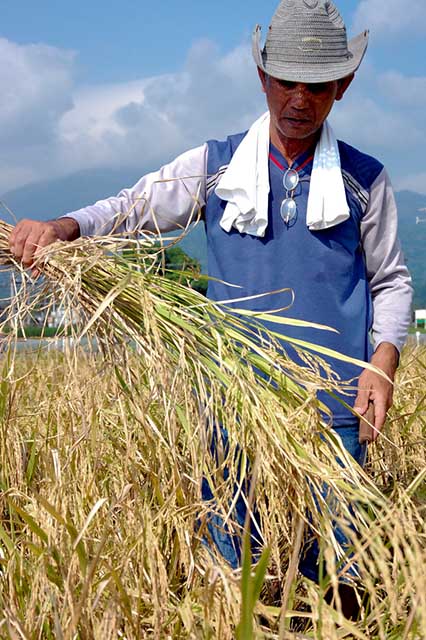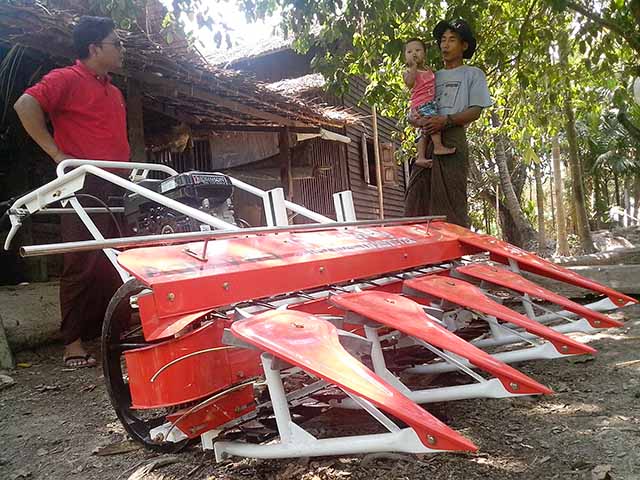Reaping
Reaping or cutting is the first operation in harvesting. Depending on the crop's condition, and availability of labor or machinery, it can be done either manually or mechanically.
Manual cutting
 Manual system is the most common means of rice harvesting. The rice crop is cut by using simple hand tools like sickle (best for cutting 15−25 cm above ground level), and simple hand-held knives (best for cutting just below the panicle, e.g. ani ani in Indonesia).
Manual system is the most common means of rice harvesting. The rice crop is cut by using simple hand tools like sickle (best for cutting 15−25 cm above ground level), and simple hand-held knives (best for cutting just below the panicle, e.g. ani ani in Indonesia).
When cutting crop with a sickle, always hold the stems with thumb pointing upwards, away from the blade.
- Advantages: Very effective in lodged crop conditions
- Disadvantages: Labor-intensive; Manual harvesting requires 5−10 person days per hectare. It will take additional labor to manually collect and haul the harvested crop.
Mechanical cutting
 Mechanical cutting uses reapers (machine that cuts and gathers). Reapers are either hand-driven or mounted on the front of a tractor. While the use of reapers has not been widespread, it is gaining popularity where labor shortages have occurred.
Mechanical cutting uses reapers (machine that cuts and gathers). Reapers are either hand-driven or mounted on the front of a tractor. While the use of reapers has not been widespread, it is gaining popularity where labor shortages have occurred.
Most reapers lay the crop in a windrow, which allows easy pick-up of the harvested crop. A reaper with a cutting-width of 1.5 m can operate at a rate of 2−4 ha per day.
To efficiently use reapers, fields need to be leveled and water drained at least 10−20 days before harvest.
- Advantages: Low labor requirements
- Disadvantages: Difficult to reap lodged crop; Availability of machine may be an issue
The time of cutting must be closely linked with threshing and drying. Threshing and drying need to be done within 24 hours of cutting.